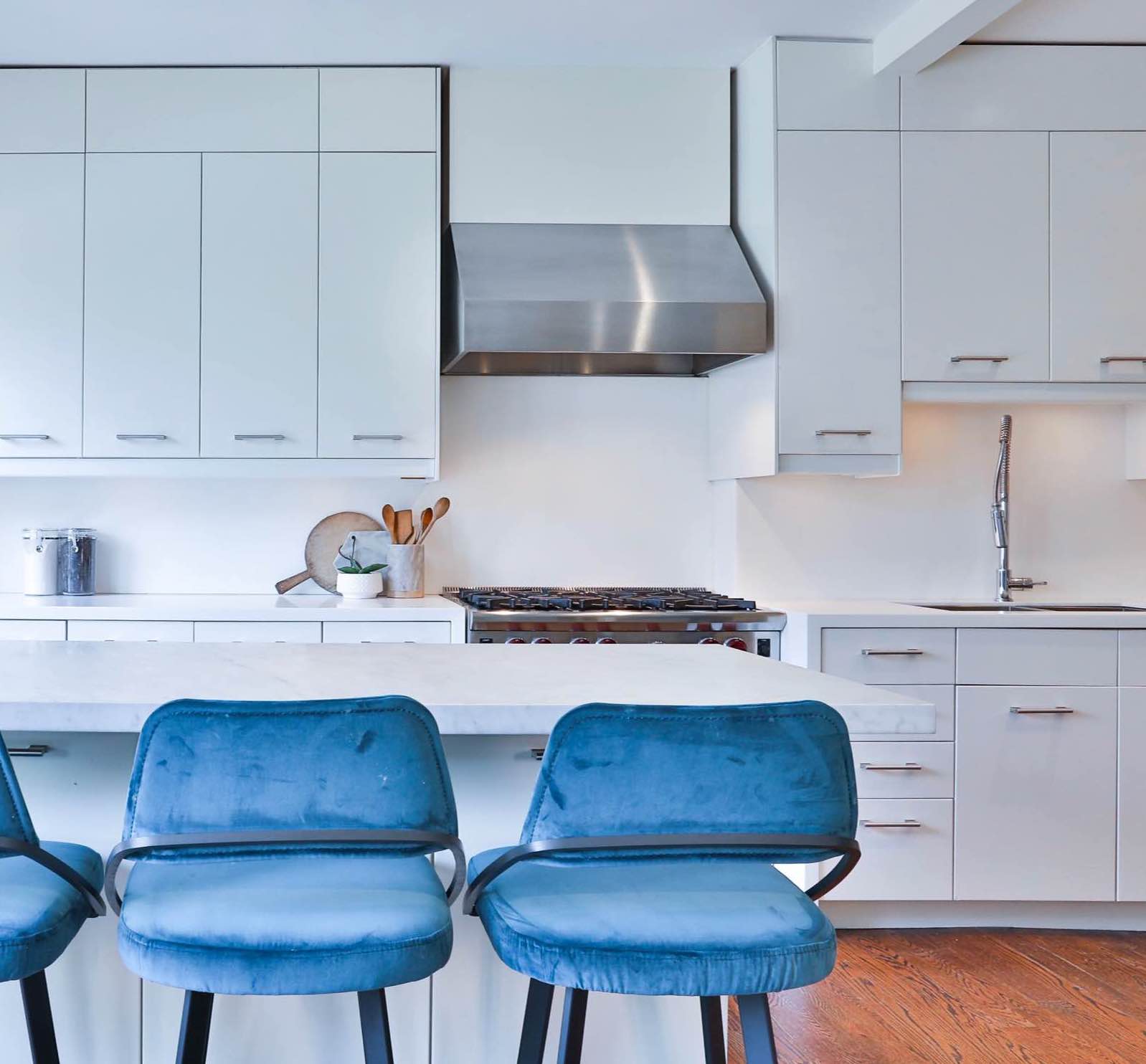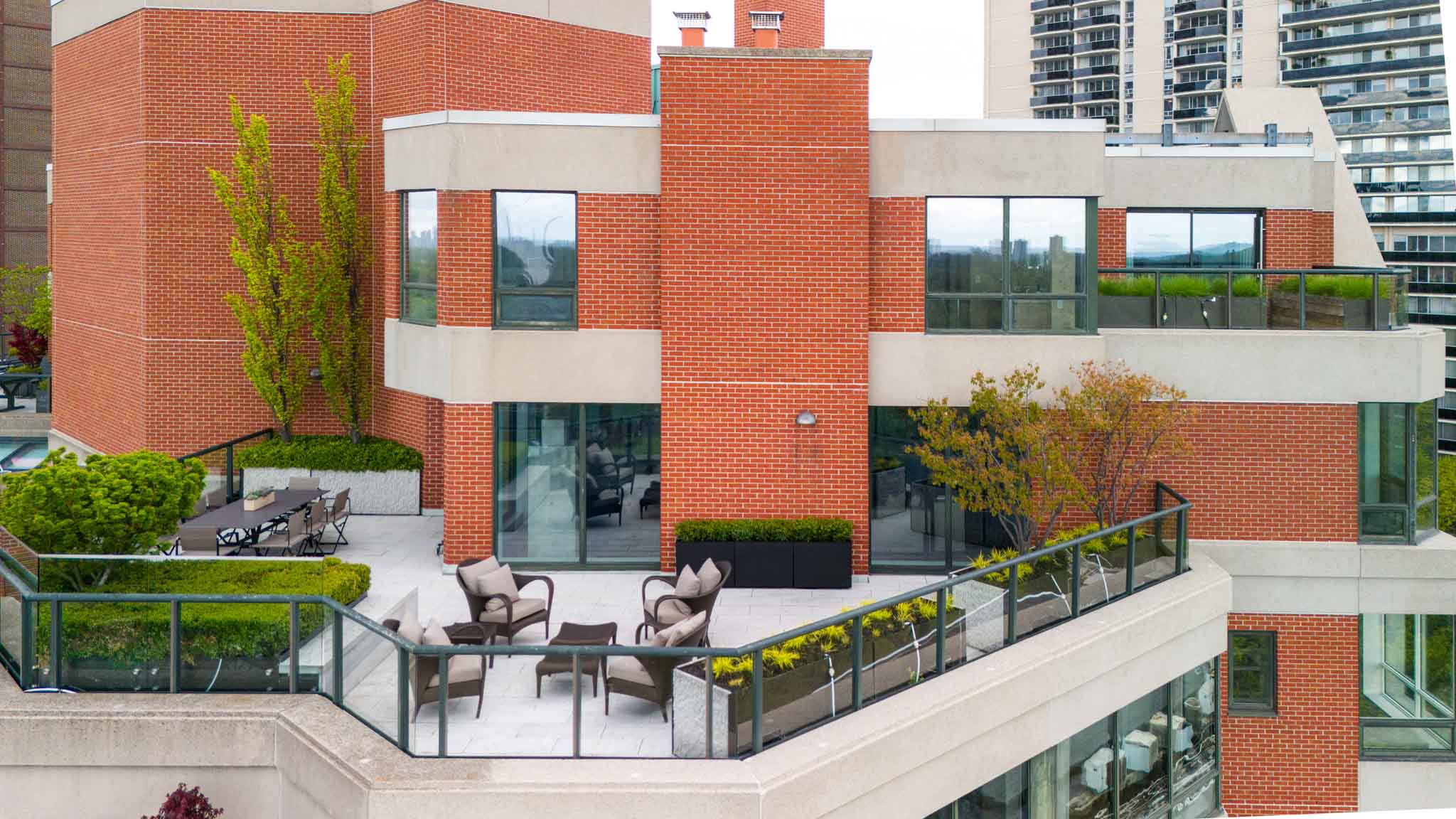
Spring 2025
Market Report
Christie Pits & Dovercourt
Neighbourhood Update: Christie Pits & Dovercourt
Average Sale Price
$1,418,556
For All Property Types
2025 Performance For All Property Types In Christie Pits & Dovercourt
22
Days on Market
68
Properties Sold
105%
List-to-Sale Ratio
2025 Market Activity: City of Toronto
30
Average Days on Market
10,809
Properties Sold
100%
Average List-to-Sale Ratio
Active Listings vs. Unit Sales
January 2024 to present
This chart tracks the number of active listings on the market each month relative to the sales. From this, we can translate the data into Months of Inventory or MOI (Active Listings/Sales) as we move through the year, giving insight into current buyer engagement.
It is hard not to notice the expanded gap between the available listings and sales this spring. Active listings grew to over 11,000 units in May and June of this year compared to 9000-9600 in the same “peak spring” months in 2024. Absorption of listings remains slow and at the end of June the MOI stands at 5.06, almost a full point higher than in 2024. To put it in perspective, in the peak COVID market in Toronto, we were tracking under one month of inventory (including houses and condos).
Months of Inventory
January 2024 to present
Registered Showings
January 2024 to present
This chart depicts the registered showing activity on MLS listings in the City of Toronto from January 2024 to the present, as tracked on the BrokerBay booking platform.
As seen in the initial spike on the chart for 2025, listings in January experienced a significant buyer turnout. A pause was had surrounding the initial adjustment to new leadership south of the border, and then buyer engagement has soared again this spring, notably even higher than 2024.
Engaging in these showings and with visitors at our open houses, we see that buyers genuinely want to buy, but uncertainty is evident at every price point.
Information provided by the Toronto Regional Real Estate Board and Brokerbay from January 2024 to June 2025 for the City of Toronto. Information is deemed reliable but not guaranteed. Does not reflect all market activity.
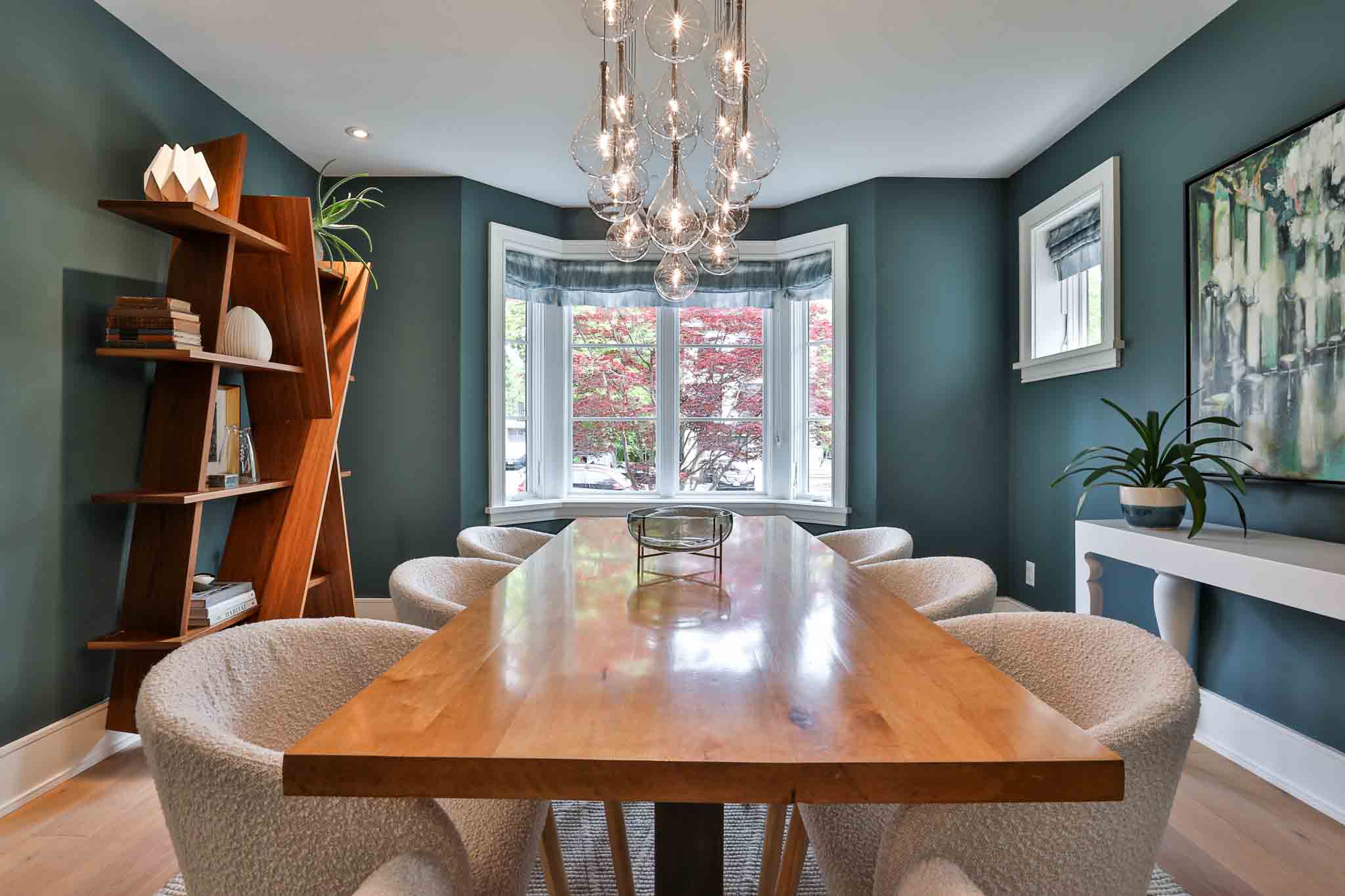
Chris Kapches is the President and CEO of Chestnut Park Real Estate.
As 2024 came to an end, the housing market was full of optimism, notwithstanding that the 2024 residential resale housing market was, in a word, dismal. Just over 70,000 homes, including condominium apartments, were reported sold for the year — the lowest level of reported sales since 1999, when 71,738 homes changed hands.
There was optimism in the air. As 2024 drew to a close, monthly sales showed signs of improvement — no doubt driven by five consecutive rate cuts by the Bank of Canada, which brought the Bank’s overnight lending rate from 4.75 percent in June to 3.25 percent in December. It appeared that affordability was once again within reach for buyers.
On January 20th, Donald Trump was inaugurated as America’s 47th President — and then everything changed. Immediately upon taking office, President Trump began threatening countries around the world, including Canada, with tariffs. Suddenly, the housing market — along with other sectors of the Canadian economy — found itself in a world of uncertainty. The buying and selling of real estate, especially residential properties, requires certainty, stability, and optimism. On January 20th, and for most of the first half of 2025, these key characteristics were absent.
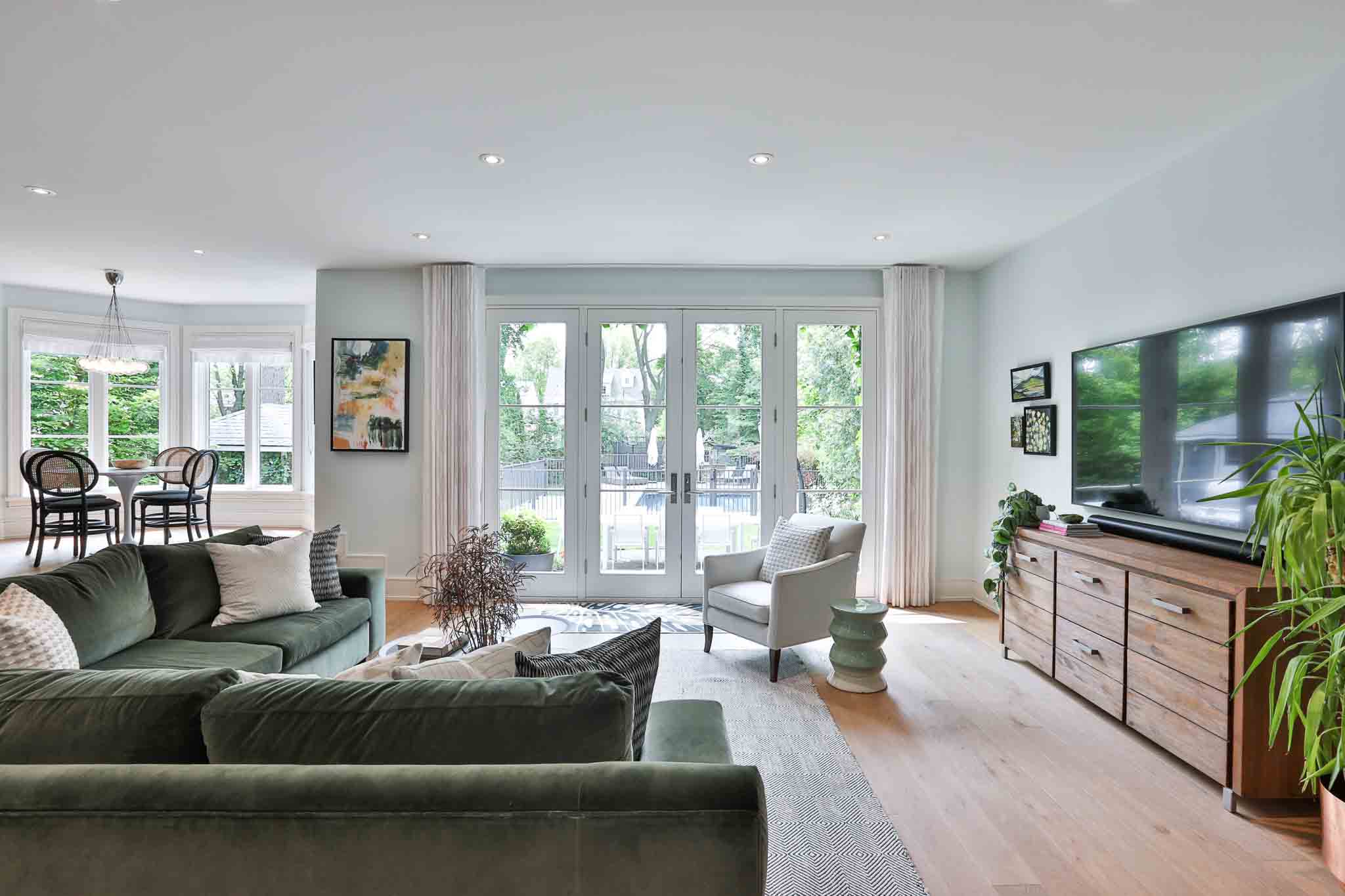
The disappearance of certainty was immediately reflected in a decline in reported sales. In January, only 3,824 homes were reported sold — almost 12 percent fewer than in January 2024.
The first three months of 2025 saw sales falling to levels not seen since the early 1990s. In 1994, just 52,796 residential properties were reported sold. The resale housing market was practically moribund. Not only were sales slow, but inventory levels also began to accumulate, pushing toward record highs.
But the Toronto and Region housing market remains resilient. By April, activity began to increase. The world had adjusted to the erratic tariff pronouncements of the American administration, and a Canadian federal election on April 28th resulted in a new Prime Minister who exuded confidence and economic acumen. An element of certainty and stability returned to the Canadian economy.
It is not surprising that housing resale numbers began to improve — 5,585 reported sales in April, 6,244 in May, and an estimated 2.6 percent increase in June, bringing total sales to over 6,400. What is even more astounding is that throughout this period of uncertainty, sale prices throughout the Region have continued to rise. In January, the average sale price (including condominium apartments) was $1,040,939. By May, it had climbed to $1,120,879 — an increase of almost 8 percent. The average price for ground-level properties in May was $1,425,264 for detached homes and $1,098,447 for semi-detached homes, with even higher prices in the City of Toronto.
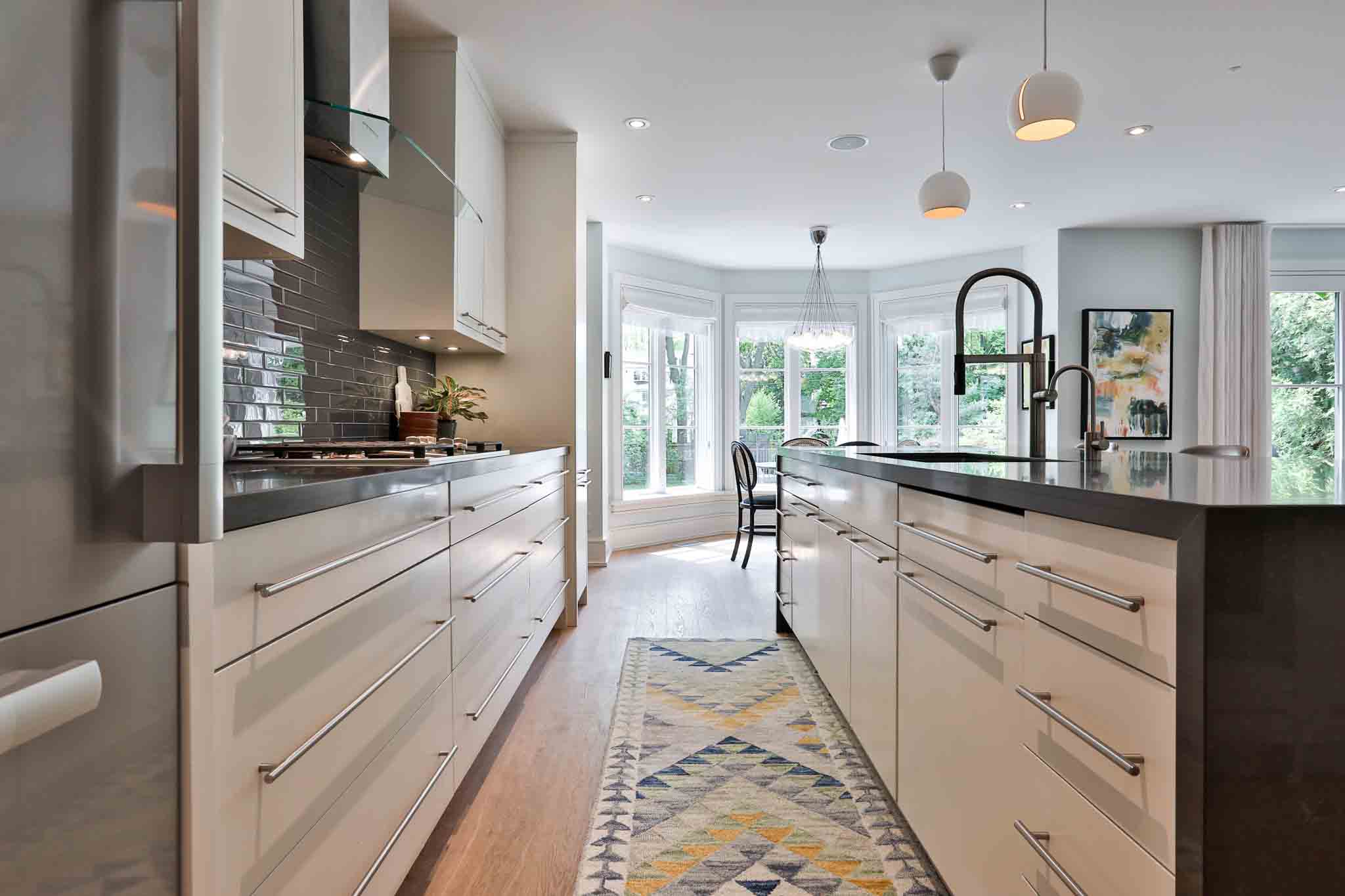
As the first half of 2025 comes to an end, some of the optimism that was prevalent at the end of last year has returned — and it is reflected in the numbers. Affordability remains a concern. The Bank of Canada has not lowered its lending rate since March, where it remains at 2.75 percent. Additionally, the number of available properties remains high. In May, there were almost 31,000 properties available to potential buyers throughout the Greater Toronto Area. A third of these properties are condominium apartments. There is, however, market momentum — something that was entirely absent in the early months of 2025.
Barring any unanticipated economic or geopolitical disruptions, the second half of 2025 should be far more positive than what we experienced in 2024 and the early part of this year. Stability — along with further rate cuts by the Bank of Canada — should begin to move the Toronto and Region residential resale market back toward pre-pandemic levels. In 2019, just before the Covid-19 pandemic 94,045 properties were reported sold.

Darlene Hanley is the Managing Partner and Mortgage Agent at Hanley Mortgage Group.
Spring 2025 Market Insights
As we wrap up the spring real estate season, there’s a noticeable shift in momentum across the Ontario market. After a period marked by elevated interest rates, inflation uncertainty, and affordability challenges, we’re now seeing signs of renewed activity. The Bank of Canada’s rate cuts earlier this year seem to have helped restore buyer confidence, particularly among first-time buyers who had been priced out or waiting on the sidelines. In the mortgage space, we’ve seen a meaningful uptick in pre-approvals and application volume, a clear sign that buyers are re-engaging and planning their next steps.
While activity is increasing, it’s not a return to the high-intensity pace of 2021. Today’s buyers are value-driven and measured, navigating a landscape where fixed rates are trending downward but remain well above their historic lows. This environment has created a more balanced marketplace, opening the door for both well-prepared buyers and motivated sellers. Notably, we’re also seeing more move-up buyers returning, this time with pricing strategies that reflect current market realities. With greater flexibility and a more grounded understanding of today’s values, these sellers are making successful transitions into their next homes.

Looking Ahead to Fall
Looking ahead to fall 2025, there’s a growing sense of optimism that market activity could gain further traction. If the Bank of Canada continues its gradual path toward lower rates—and inflation remains under control—we could see renewed demand from buyers who had previously paused their plans or faced qualification challenges. Additional rate cuts would support improved affordability, and if listing inventory grows, the stage could be set for a more active and opportunity-rich fall market.
There’s also increasing discussion around changes to the mortgage stress test. The Office of the Superintendent of Financial Institutions (OSFI) is exploring a broader regulatory shift that may replace the current borrower-level stress test with a loan-to-income (LTI) cap applied at the institutional level. Since January 2025, federally regulated lenders have been required to ensure no more than 15% of their new uninsured mortgages exceed a loan-to-income ratio of 450%. OSFI will evaluate the impact of this approach through mid-2026 before making any permanent decisions. If adopted, this shift could ease pressure on individual borrowers and enhance affordability for many buyers.
Now is an optimal time to revisit any financing strategies. Securing a new mortgage pre-approval this summer can provide buyers with a strong advantage—especially with rate holds in play and lenders offering more competitive terms than we’ve seen in recent quarters. With over a million mortgage renewals occurring this year and increased flexibility in the lending space, there’s ample room for strategic planning. This fall could present meaningful opportunities for those ready to make their move.

Brenda Izen is the Principal and Founder of Izen Architecture.
In a dynamic real estate market, understanding what makes a home desirable can be just as important as tracking sales and prices. Beyond square footage and location, it’s the design features that can make each home unique and elevate its value. We build homes in the high-end market where our clients typically have room to explore creative ideas — and what they’re asking for tells us a lot about where home design is headed.
Some wish list items have become so common they’re practically expected. Oversized kitchen islands, walk-in pantries, appliance garages, seamless indoor-outdoor spaces, electric car chargers, home elevators, and ensuite bathrooms for every bedroom — these aren’t luxuries anymore, they’re the new normal. But when budgets allow for more imagination, that’s where things get really interesting.
Take storage, for example. Walk-in and butler’s pantries have been popular for years, but now we’re seeing the rise of walk-in coolers — essentially, giant refrigerators you can physically step into, complete with wraparound shelving to store everything from weekly groceries to party supplies and leftovers. It’s the next level of convenience and luxury, especially for people that love to host.
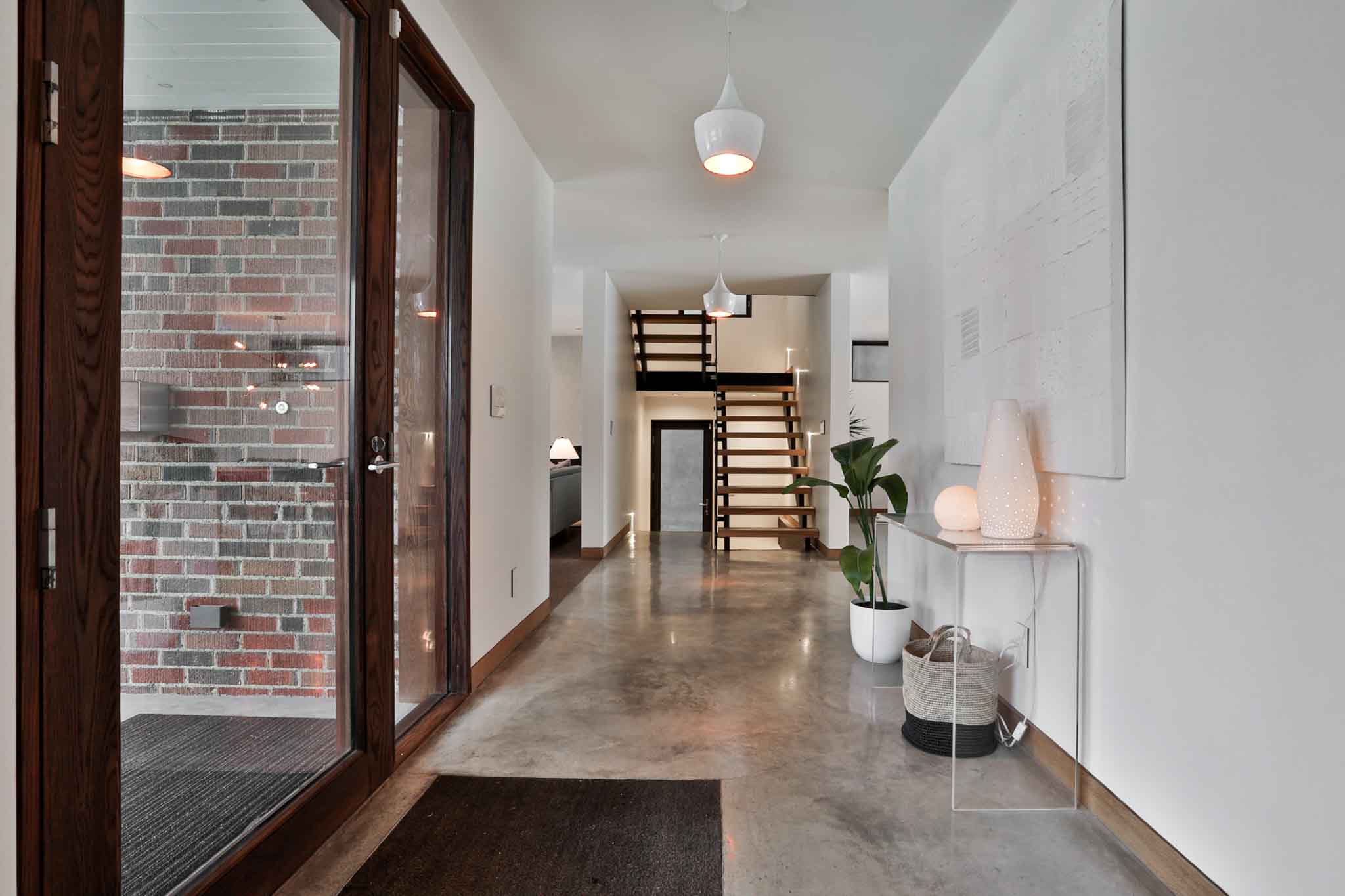
Entertainment spaces are also evolving. Pickleball is the sport of the moment, and homeowners aren’t content to play at the local court — many are asking for indoor pickleball courts right at home. To make room for these courts as well as other wish list toys such as racing simulators, golf bays, and home gyms, extra-high basement ceilings have become one of the most sought-after design requests.
Another rising priority is home security. We’ve seen a surge in requests for panic rooms — discreet, fortified spaces designed to protect people and their valuables. These spaces need to be easy to access and quick to close off, while allowing families to monitor security cameras and contact authorities from inside. Some of these panic rooms aren’t just about safety; they can double as secure storage for artwork, rare collections, or sensitive electronics.
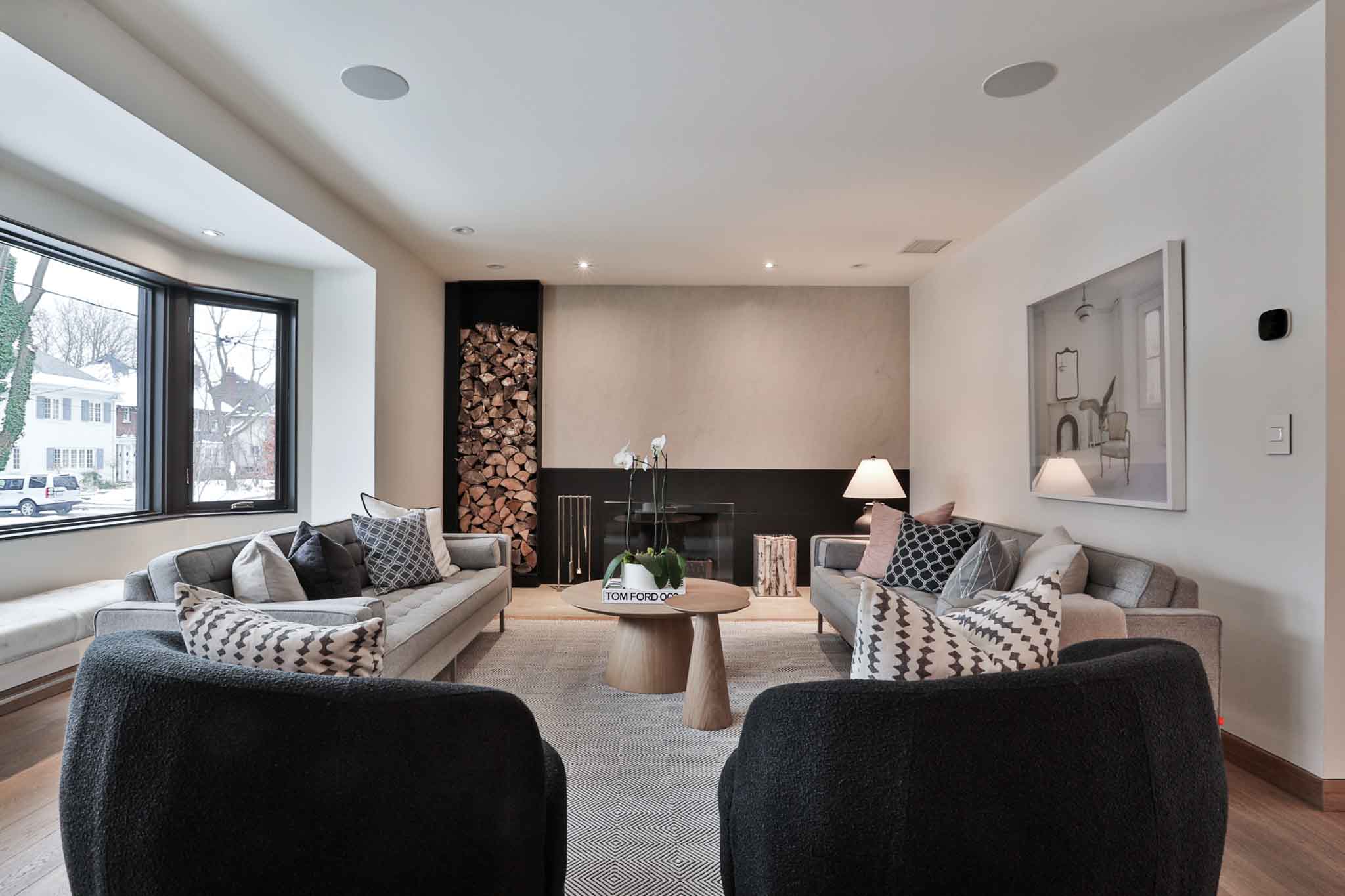
And then there’s resilience and sustainability. While energy efficiency once felt like a nice-to-have, we’re now seeing clients who want to build homes that can operate off-grid when necessary. Whether it’s backup power for outages, flood-proofing, or self-sufficient energy systems, homeowners are increasingly looking for ways to future-proof their properties against climate events and infrastructure failures.
Every one of these features needs to be carefully planned from the start. The best time to explore these possibilities is early in the design process — when your architect can integrate them seamlessly into the structure, layout, and systems of your home. These aren’t afterthoughts; they’re part of what makes a custom home truly custom.
If you’re considering a renovation or new build, don’t hesitate to bring your biggest ideas to the table — even the wild ones. The right team can help you make them a reality.
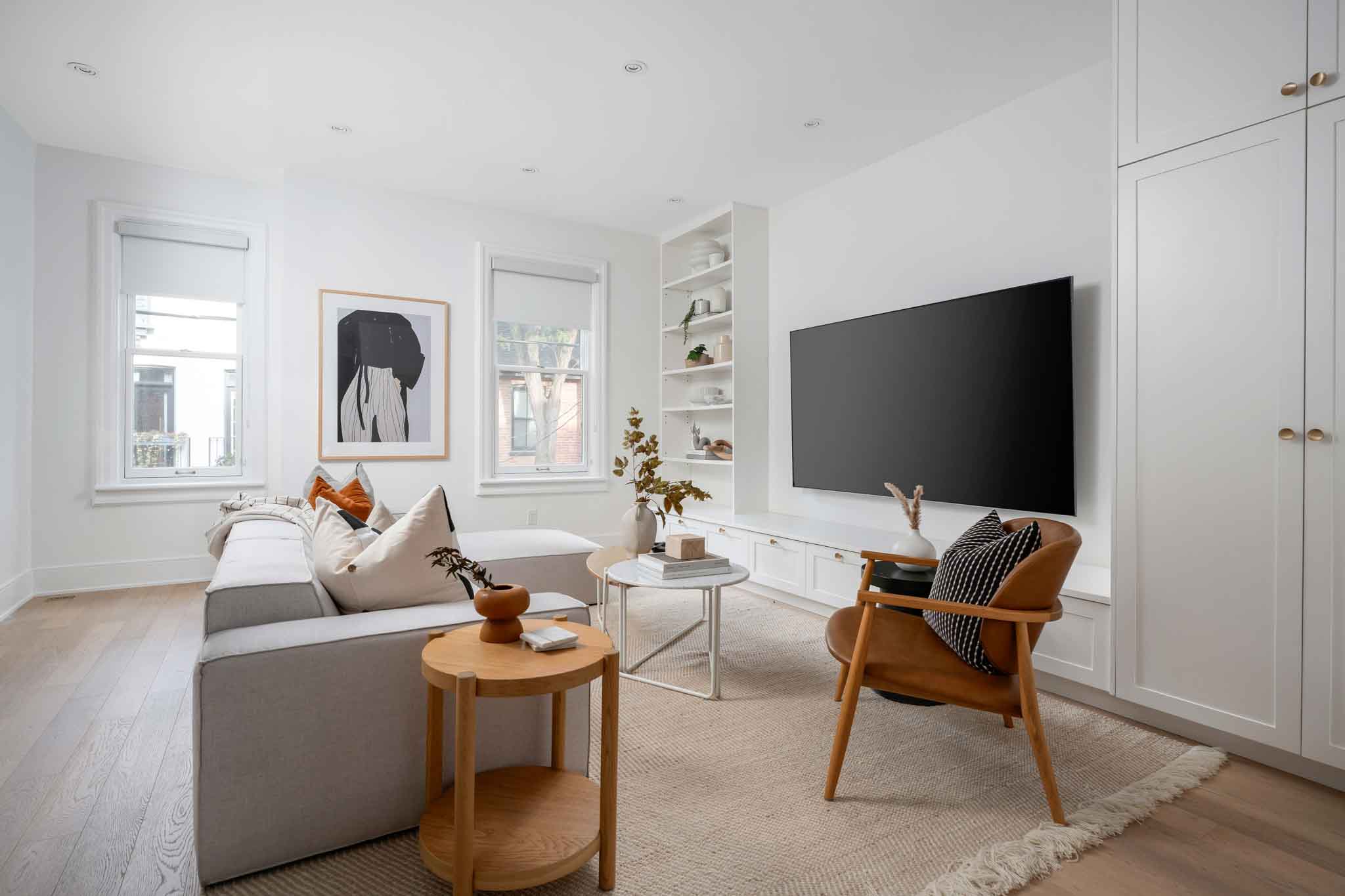
Being on the road as much as we are, all of us on the Maggie Lind Real Estate Team have become closely acquainted with the hidden gems of our beloved city. Below are our recommendations for favourite spots, great picnics, and more.
Best Patio in the City
Maggie L: For a city view, the Park Hyatt.
Liya: Allen’s on the Danforth.
Erin: Sunnyside Pavillion – Right along the boardwalk and overlooks the beach volleyball courts.
Yann: Broadview Hotel Rooftop.
Maggie B: The Rhino Bar & Grill.
Kanza: Sunny’s Chinese, it’s an adventure to even find it!
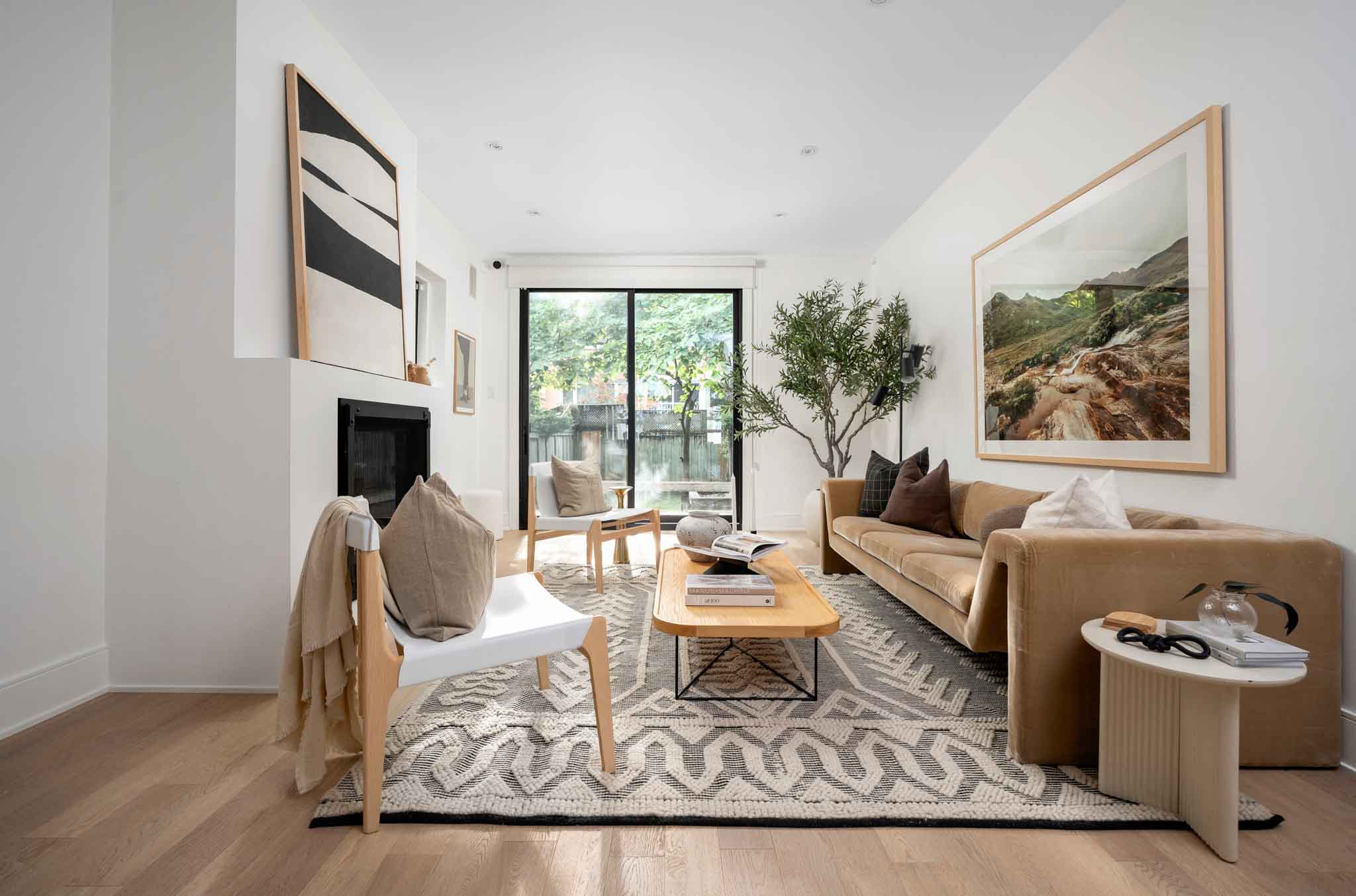
What Concert or Event are You Looking Forward To?
Maggie L: It’s in the fall, but Morgan Wallen. Wish I was going to see Oasis!
Liya: On pause until baby’s arrival, then the Wiggles Tour or Little Ravers will be among the first events we’ll be attending.
Erin: Rufus Du Sol at Budweiser Stage.
Yann: Morgan Wallen.
Maggie B: Blue Rodeo.
Kanza: Geary Art Crawl.
Best Farmer’s Market and What you Like to Pick Up:
Maggie L: Fresh local fruit and veggies at Wychwood Barns. I don’t eat meat, so summer season is my food season! I can’t wait!
Liya: Leslieville Farmer’s Market held at Greenwood Park.
Erin: Sorauren Farmers Market – lots of tasty treats.
Yann: Brickworks Farmers Market, specifically Foragers Farms for their Dill Relish and spreads.
Maggie B: St Lawrence Market, fresh ground coffee.
Kanza: Underpass Farmer’s Market, fruits and veggies for the week.
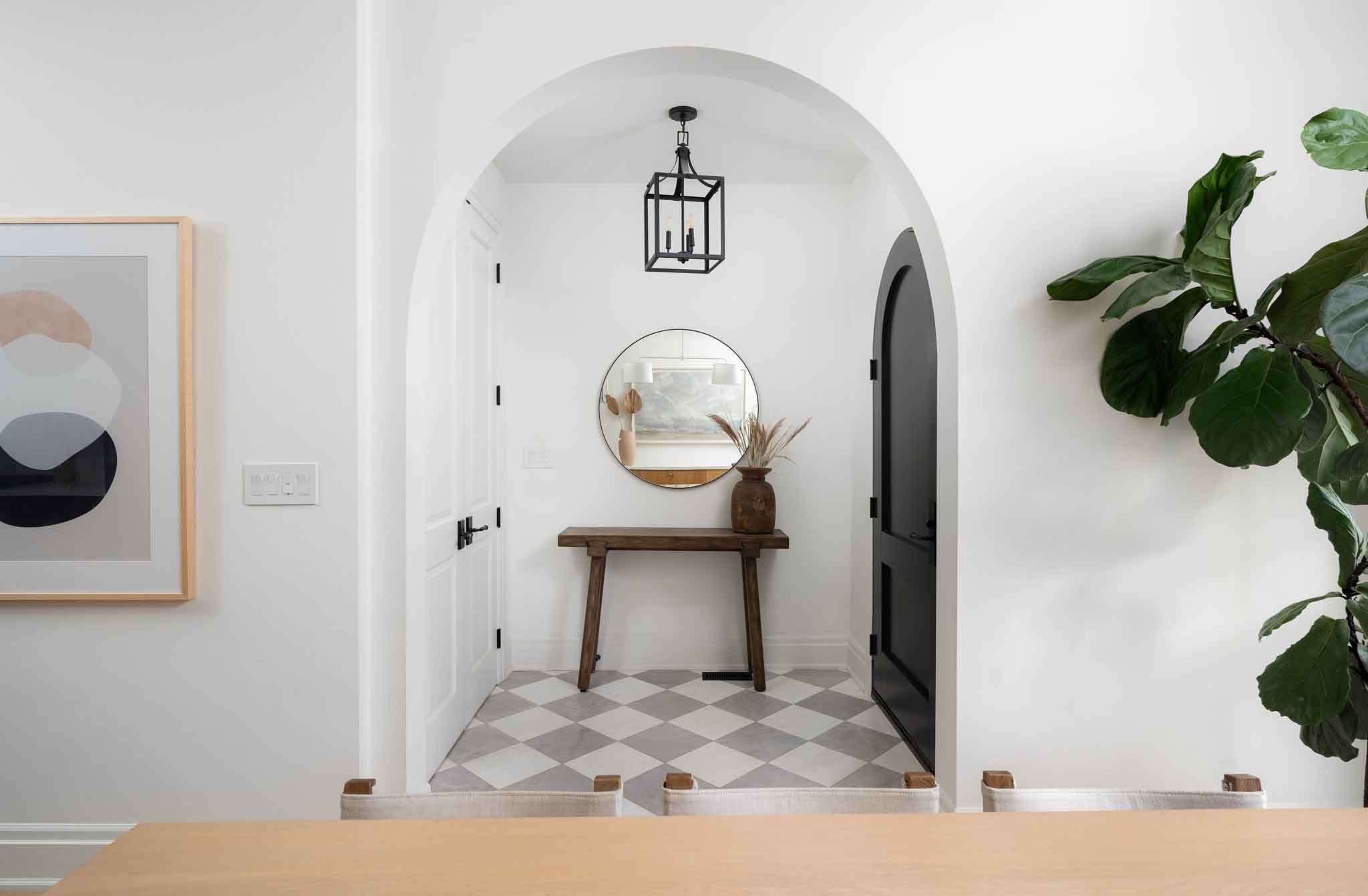
Best Place for a Picnic:
Maggie L: Trinity Bellwoods Park to see what all the cool kids are into! I feel old going there now.
Liya: Riverdale Park, especially for the sunset views of the city.
Erin: High Park – lots of picnic areas and exploring to do.
Yann: Trillium Park, great views of the lake/city. They have built designated fire pit areas available to the public.
Maggie B: Centre Island.
Kanza: Bickford Park, it’s tucked away and there’s always something fun going on!
Best Ice Cream Shop and Favourite Flavour:
Maggie L: Hollywood Gelato, Hazelnut.
Liya: Ed’s Real Scoop on Queen E – Tanzanian Dark Chocolate Gelato.
Erin: Ed’s Real Scoop – Burnt Marshmallow.
Yann: Ed’s Real Scoop in Leslieville, lemon sorbet in a waffle cone.
Maggie B: Death In Venice Gelato, Cheese Board.
Kanza: Moss Park Espresso and Avoca Chocolate Shop – both these places make the gelato in-house and every flavour is so good!
